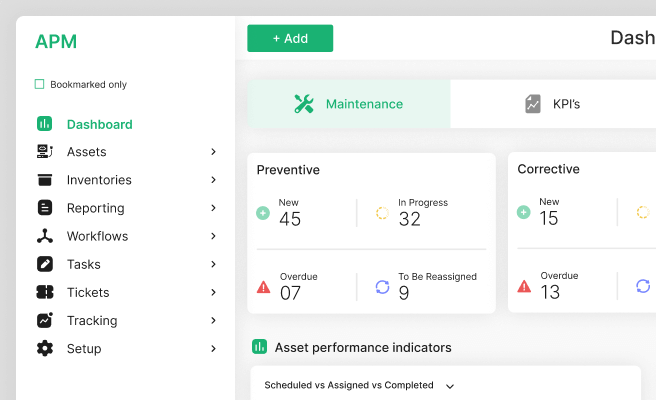Digital Transformation
<p>Digital transformation refers to the integration of digital technology into all areas of a business, fundamentally changing how you operate and deliver value to customers. It's a crucial process in today's rapidly evolving digital landscape, enabling organizations to improve efficiencies, drive innovation, and stay competitive.</p>
<p>Historically, digital transformation began as businesses started to adopt new technologies to streamline operations and enhance customer experiences. Over time, it has evolved to encompass a broad range of digital tools and strategies, from data analytics and artificial intelligence to cloud computing and the Internet of Things (IoT).</p>
<h2>Key Components of Digital Transformation</h2>
<p>Digital transformation is multifaceted, involving several key components:</p>
<p><strong>1. Technology Integration:</strong> Implementing advanced technologies such as cloud computing, AI, and IoT to enhance business operations.</p>
<p><strong>2. Data-Driven Decision Making:</strong> Leveraging big data and analytics to inform strategic decisions and improve customer insights.</p>
<p><strong>3. Process Automation:</strong> Utilizing automation tools to streamline workflows and increase operational efficiency.</p>
<p><strong>4. Customer Experience Enhancement:</strong> Improving user experiences through personalized services and digital interfaces.</p>
<p><strong>5. Cultural Shift:</strong> Encouraging a digital-first mindset within the organization to foster innovation and adaptability.</p>
<h2>Benefits of Digital Transformation</h2>
<p>Embracing digital transformation offers numerous benefits:</p>
<p><strong>1. Increased Efficiency:</strong> Automation and technology integration reduce manual processes, saving time and resources.</p>
<p><strong>2. Enhanced Customer Experiences:</strong> Digital tools enable personalized and seamless customer interactions, boosting satisfaction and loyalty.</p>
<p><strong>3. Better Decision Making:</strong> Data analytics provide valuable insights that drive informed decisions and strategies.</p>
<p><strong>4. Greater Agility:</strong> Digital transformation enables organizations to quickly adapt to market changes and emerging trends.</p>
<p><strong>5. Competitive Advantage:</strong> Staying ahead of technological advancements ensures staying competitive in the market.</p>
<h2>Challenges in Digital Transformation</h2>
<p>Despite its advantages, digital transformation presents several challenges:</p>
<p><strong>1. Resistance to Change:</strong> Employees may be hesitant to adopt new technologies and processes, requiring effective change management strategies.</p>
<p><strong>2. Security Concerns:</strong> Integrating digital technologies can expose organizations to cybersecurity risks, necessitating robust security measures.</p>
<p><strong>3. High Costs:</strong> The initial investment in digital tools and infrastructure can be substantial, especially for small businesses.</p>
<p><strong>4. Skill Gap:</strong> Ensuring that employees possess the necessary digital skills requires continuous training and development.</p>
<h2>Real-World Examples of Digital Transformation</h2>
<p>Many companies have successfully implemented digital transformation initiatives:</p>
<p><a href="https://www.mckinsey.com/business-functions/mckinsey-digital/our-insights/how-six-companies-are-using-technology-and-data-to-transform-themselves" style="color:#2896FF; text-decoration:underline;">McKinsey</a> highlights how six companies, including Honeywell and Marriott, leveraged digital transformation to enhance their operations and customer experiences.</p>
<p>In the climate tech sector, companies like <a href="https://www.farmersedge.ca/" style="color:#2896FF; text-decoration:underline;">Farmers Edge</a> have utilized digital tools to provide precision agriculture solutions, helping farmers optimize production and reduce environmental impact.</p>
<h2>Steps to Implement Digital Transformation</h2>
<p>Here are some actionable steps to guide your digital transformation journey:</p>
<p><strong>1. Assess Current State:</strong> Evaluate your current technologies, processes, and capabilities to identify areas for improvement.</p>
<p><strong>2. Set Clear Goals:</strong> Define specific objectives for your digital transformation efforts, such as improving customer experience or increasing operational efficiency.</p>
<p><strong>3. Develop a Roadmap:</strong> Create a detailed plan outlining the steps, timelines, and resources required for implementation.</p>
<p><strong>4. Invest in Technology:</strong> Choose the right digital tools and platforms that align with your goals and budget.</p>
<p><strong>5. Foster a Digital Culture:</strong> Encourage a culture of innovation and continuous learning to support the adoption of new technologies.</p>
<p><strong>6. Monitor and Adjust:</strong> Continuously track the progress of your digital transformation initiatives and make adjustments as needed to ensure success.</p>
<h2>Conclusion</h2>
<p>Digital transformation is a critical strategy for businesses seeking to thrive in the digital age. By integrating advanced technologies, leveraging data, and fostering a culture of innovation, organizations can enhance their operations, deliver superior customer experiences, and stay competitive in an ever-changing market. Embrace digital transformation to unlock new opportunities and drive long-term success.</p> <p>To understand the power of design across industries and sectors, view our diverse portfolio of works. <a href="https://www.whatifdesign.co/work" style="color:#2896FF; text-decoration:underline;">View our portfolio</a>.</p> <p>Increase user engagement that converts your demos into sales. Optimise your UX strategies with our audits.
<p>Fill out the <a href="https://tally.so/r/n97pxQ" style="color:#2896FF; text-decoration:underline;">UX Audit form</a> to get started. Ready to discuss your needs? <a href="https://cal.com/akhilak/what-if-design?duration=25" style="color:#2896FF; text-decoration:underline;">Book a consultation call</a> with us today.</p></p>

Let's scale your impact with great design.
Free consultation, no sales pitch
Thank you! Your submission has been received!
Oops! Something went wrong while submitting the form.
Let’s talk
Nothing great is built alone.
Let’s connect about your vision, our work and how we can collaborate.
Get in touch

